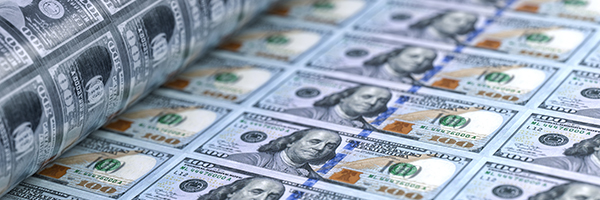PEP

April 25, 2025 | Daily JAM, PEP |
On Thursday, PepsiCo cut its full-year guidance outlook, citing a reduction in consumer spending as well as the impact of higher tariffs.
“Relative to where we were three months ago, we probably aren’t feeling as good about the consumer now,” Jamie Caulfield, PepsiCo CFO, told Wall Street analysts and investors on an earnings call Thursday morning.

February 14, 2025 | AAPL, ACAD, AGN, ALV, AMZN, AUY, BABA, BG, BGC, BHP, BMY, CHK, CMI, CNI, COH, CSCO, CX, Daily JAM, DD, DE, DHR, DXJR, EBAY, ENB, EUM, FB, FCX, FLR, FLS, FTV, GLD, Jubak Picks, MPC, OGXI, OKS, PEP, PFXF, POT, PXD, QCOM, RSPP, RYN, SDRL, SFTBY, SH, SLB, SPWR, Videos, Volatility |
Today’s Hot Money Moves NOW is China Buys More Gold. Gold seems like a good asset to own right now but it’s also trading at record highs. So while gold is safe, especially if inflation goes up, how much higher do you expect gold to go? One thing to look at it is who is emerging as a buyer. Central banks have been buying gold to hedge risks and diversify, which has contributed to the record highs. Recently, the Chinese government announced that 10 big Chinese insurance companies will now be allowed to put up to 1% of their portfolios into gold. This hasn’t been allowed in the past and will provide about $27 billion for new gold buying. This is also just another sign that countries and businesses are looking to hedge risk by buying gold and it’s one of the safer places to be in an uncertain market.

February 11, 2025 | AGN, ALV, AMZN, AUY, BABA, BG, BGC, BHP, BMY, CHK, CMI, CNI, COH, CSCO, CX, Daily JAM, DD, DE, DHR, DXJR, EBAY, ENB, EUM, FB, FCX, FLR, FLS, FTV, GE, GLW, GOOG, HAIN, HDB, INCY, IONS, ITUB, JCI, JO, JOY, KMI, LFL, LNG, LUX, MGM, MIDD, MON, MPC, OGXI, OKS, PEP, PFXF, POT, PXD, QCOM, RSPP, RYN, SDRL, SFTBY, SH, SLB, SPWR, Videos |
Today’s video is Is Wall Street ready to write off 2025? I’m seeing a gradual move on Wall Street from “Trump doesn’t mean what he’s saying about tariffs and mass deportations” to “Maybe he is serious.” On Monday, Trump announced 25% tariffs on steel and aluminum with a starting date of March 4, on top of other tariffs already announced. You can see the shift in commentary from big banks like Bank of America and JP Morgan. These companies are now saying that things that will negatively affect growth are happening much more quickly than things that will support the stock prices. New tariffs and economic uncertainty, which has caused the Fed to refrain from cutting interest rates, are happening now and will be hitting the market. Tax cuts and deregulation, which could goose growth, will take longer to implement and we may not feel those positive effects until 2026 or later. Wall Street is basically saying that 2025 will be a year of negative risks, but 2026 may be more of an upside if tax cuts and deregulation do, indeed, happen.

February 6, 2025 | AAPL, ACAD, AGN, ALV, AMZN, AUY, BABA, BG, BGC, BHP, BMY, CHK, CMI, CNI, COH, CSCO, CX, Daily JAM, DD, DE, DHR, DXJR, EBAY, ENB, EUM, FB, FCX, FLR, FLS, FTV, GE, GLW, GOOG, HAIN, HDB, INCY, IONS, ITUB, JCI, JO, JOY, KMI, LFL, LNG, LUX, MGM, MIDD, MON, MPC, OGXI, OKS, PEP, PFXF, POT, PXD, QCOM, RSPP, RYN, SDRL, SFTBY, SH, Short Term, SLB, SPWR, Videos, Z-SYMBOLS |
Today’s video is the Fed is between a rock and a hard place. Inflation has been stuck around 2.8% and the Fed would like to get it down to 2%. In January, the Fed paused any movement on interest rates but Wall Street remained hopeful for two cuts in 2025. The March 19 meeting will include a dot plot that will outline whether or not the central bank is thinking about any cuts for 2025. The problem is the Fed doesn’t know where the economy is going. There are too many uncertainties surrounding constantly changing Trump tariffs as well as the expected tax cut bill (which will result in higher yields and a market and economic stimulus). The budget also remains an unanswered question. These uncertainties, with the Fed also under huge political pressure from the Trump administration to make interest rate cuts, catch the Fed between a rock and a hard place and we won’t know how the Fed plans to address its dilemma until March.

January 10, 2025 | AAPL, ACAD, ADSK, AGN, ALB, ALV, AMZN, ARCO, ARGT, AUY, BABA, BG, BGC, BHP, BMY, CHK, CMI, CNI, COH, CSCO, CTRP, CX, Daily JAM, DD, DE, DHR, DWDP, DXJR, EBAY, EEM, EFNL, ENB, EUM, EWZS, FANG, FANUY, FB, FCX, FEZ, FLR, FLS, FTV, GDXJ, GE, GGAL, GLD, GLW, GOOG, HAIN, HDB, HP, INCY, ING, IONS, ITUB, IVV, JCI, JO, JOY, KBWB, KMI, LFL, LNG, LUX, MGM, MIDD, MON, Morning Briefing, MPC, MXF, NJDCY, NKTR, OGXI, OKS, PEP, PFXF, POT, PXD, PYPL, QCOM, RSPP, RYN, SDRL, SFTBY, SH, SLB, SPWR, SQM, STO, SYNA, TCEHY, TPR, TRGP, TS, V, VALE, VEA, Videos, VMC, VZ, WBK, WES, XOM, XYL, YPF, Z-SYMBOLS |
In December U.S. economy in December added the most jobs since March and the unemployment rate unexpectedly fell. Nonfarm payrolls increased 256,000, exceeding all but one forecast in a Bloomberg survey of economists. The unemployment rate fell to 4.1%, while average hourly earnings rose 0.3% from November, a Bureau of Labor Statistics report showed Friday. For 2024 as a whole, the economy added 2.2 million jobs—-below the 3 million increase in 2023 but above the 2 million created in 2019. The data almost certainly assured that the Federal Reserve would not cut interest rates at its January 29 meeting. As of 11 a.m. New York time, the yield on the 10-year Treasury had climbed another 5 basis points to 4.74%.

January 9, 2025 | AAPL, ACAD, ADSK, AGN, ALB, ALV, AMZN, ARCO, ARGT, AUY, BABA, BG, BGC, BHP, BMY, CHK, CMI, CNI, COH, CSCO, CTRP, CX, DD, DE, DHR, DWDP, DXJR, EBAY, EEM, EFNL, ENB, EUM, EWZS, FANG, FANUY, FB, FCX, FEZ, FLR, FLS, FTV, GDXJ, GE, GGAL, GLD, GLW, GOOG, HAIN, HDB, HP, INCY, ING, IONS, ITUB, IVV, JCI, JO, JOY, KBWB, KMI, LFL, LNG, LUX, MGM, Mid Term, MIDD, MON, Morning Briefing, MPC, MXF, NJDCY, NKTR, Notes You Need, OGXI, OKS, PEP, Perfect Five-ETFs, PFXF, POT, PXD, PYPL, QCOM, RSPP, RYN, SDRL, SFTBY, SH, SLB, SPWR, SQM, STO, SYNA, TCEHY, TPR, TRGP, TS, V, VALE, VEA, Videos, VMC, VZ, WBK, WES, XOM, XYL, YPF, Z-SYMBOLS |
China’s consumer price index rose 0.1% in December from a year earlier, in line with the median forecast of economists surveyed by Bloomberg. Factory deflation extended into a 27th month, though the producer price index recorded a slower drop of 2.3%, the National Bureau of Statistics said Thursday. For the full year, consumer prices only inched up 0.2% from 2023, well short of the 1.1% gain economists had predicted at the beginning of 2024.

January 8, 2025 | AAPL, ACAD, ADSK, AGN, ALB, ALV, AMZN, ARCO, ARGT, AUY, BABA, BG, BGC, BHP, BMY, CHK, CMI, CNI, COH, CSCO, CTRP, CX, DD, DE, DHR, DWDP, DXJR, EBAY, EEM, EFNL, ENB, EUM, EWZS, FANG, FANUY, FB, FCX, FEZ, FLR, FLS, FTV, GDXJ, GE, GGAL, GLD, GLW, GOOG, HAIN, HDB, HP, INCY, ING, IONS, ITUB, IVV, JCI, JO, JOY, KBWB, KMI, LFL, LNG, LUX, MGM, MIDD, MON, Morning Briefing, MPC, MXF, NJDCY, NKTR, Notes You Need, OGXI, OKS, PEP, PFXF, POT, PXD, PYPL, QCOM, RSPP, RYN, SDRL, SFTBY, SH, Short Term, SLB, SPWR, SQM, STO, SYNA, TCEHY, TPR, TRGP, TS, V, VALE, VEA, Videos, VMC, VZ, WBK, WES, XOM, XYL, YPF, Z-SYMBOLS |
In minutes from the Federal Reserve’s December 17-18 meeting released on Wednesday, January 8, Federal Reserve officials clearly decided to move more slowly on cutting interest rates in the quarters ahead. “Participants indicated that the committee was at or near the point at which it would be appropriate to slow the pace of policy easing,” minutes from the Federal Open Market Committee showed. “Many participants suggested that a variety of factors underlined the need for a careful approach to monetary policy decisions over coming quarters.” Please note the reference to “quarters” and not “months.”

January 8, 2025 | AAPL, ACAD, ADSK, AGN, ALB, ALV, AMZN, ARCO, ARGT, AUY, BABA, BG, BGC, BHP, BMY, CHK, CMI, CNI, COH, CSCO, CTRP, CX, DD, DE, DHR, DWDP, DXJR, EBAY, EEM, EFNL, ENB, EUM, EWZS, FANG, FANUY, FB, FCX, FEZ, FLR, FLS, FTV, GDXJ, GE, GGAL, GLD, GLW, GOOG, HAIN, HDB, HP, INCY, ING, IONS, ITUB, IVV, JCI, JO, JOY, KBWB, KMI, LFL, LNG, LUX, MGM, MIDD, MON, Morning Briefing, MPC, MXF, NJDCY, NKTR, Notes You Need, OGXI, OKS, PEP, Perfect Five-ETFs, PFXF, POT, PXD, PYPL, QCOM, RSPP, RYN, SDRL, SFTBY, SH, Short Term, SLB, SPWR, SQM, STO, SYNA, TCEHY, TPR, TRGP, TS, V, VALE, VEA, Videos, VMC, VZ, WBK, WES, XOM, XYL, YPF, Z-SYMBOLS |
The 20-year Treasury bond, a laggard on the government debt curve since its re-introduction in 2020, topped 5% Wednesday for the first time since 2023. The move looks to be fueled by concern that President-elect Donald Trump’s policies on tariffs and tax cuts will lead to wider deficits and rekindle inflation.

January 7, 2025 | AAPL, ACAD, ADSK, AGN, ALB, ALV, AMZN, ARCO, ARGT, AUY, BABA, BG, BGC, BHP, BMY, CHK, CMI, CNI, COH, CSCO, CTRP, CX, Daily JAM, DD, DE, DHR, DWDP, DXJR, EBAY, EEM, EFNL, ENB, EUM, EWZS, FANG, FANUY, FB, FCX, FEZ, FLR, FLS, FTV, GDXJ, GE, GGAL, GLD, GLW, GOOG, HAIN, HDB, HP, INCY, ING, IONS, ITUB, IVV, JCI, JO, JOY, KBWB, KMI, LFL, LNG, LUX, MGM, Mid Term, MIDD, MON, Morning Briefing, MPC, MXF, NJDCY, NKTR, OGXI, OKS, PEP, PFXF, POT, PXD, PYPL, QCOM, RSPP, RYN, SDRL, SFTBY, SH, SLB, SPWR, SQM, STO, SYNA, TCEHY, TPR, TRGP, TS, V, VALE, VEA, Videos, VMC, VZ, WBK, WES, XOM, XYL, YPF, Z-SYMBOLS |
The Institute for Supply Management’s index of services advanced 2 points to 54.1 last month. That show of strength in the economy–readings above 50 indicate expansion–was enough to push stocks lower as the markets began to price in a delay in the next interest rate cut from the Federal Reserve until July The measure of prices paid for materials and services rose more than 6 points to 64.4, suggesting that the drop in the inflation rate in the service sector–about 70% of the U.S. economy–might be over.

July 31, 2024 | CMG, Daily JAM, Dividend Income, Jubak Picks, MCD, Mid Term, Morning Briefing, PEP, Top 50 Stocks |
I’ve started to call this The McDonald’s Economy–where the long-term effects of high inflation on prices damps consumer purchasing, but where the recent drop in inflation has limited companies’ “cover” for price increases. The result is that companies are seeing lower sales volumes at the same time as consumers push back ore strongly against price increases. McDonald’s isn’t the only company caught in this vise. Customer traffic at U.S. fast-food restaurants fell 2% in the first half of the year compared to the same period a year ago, according to Circana, a market research company. Circana expects high inflation and rising consumer debt will also dent traffic in the second half of 2024.

October 10, 2023 | Daily JAM, Dividend Income, Jubak Picks, PEP |
Clearly, inflation isn’t bad for everyone. Not if you have pricing power, anyway. Today, PepsiCo (PEP) reported earnings and sales that a beat Wall Street estimates, and raised its guidance for the next quarter.

April 18, 2023 | COST, Daily JAM, GDX, GLD, GOLD, KO, Mid Term, PEP, RWM, Special Reports |
10 Picks for the Coming Recession. This one is especially difficult. Not only do I face the usual crystal-ball problem that comes up whenever you try to pick an investment for the future–what’s the macro and micro world going to look like in 6 months or a year from now–but I’ve got two big Recession-specific challenges. First, is there actually going to be a Recession in 2023? All the signs, in my opinion, point toward a recession in the second and third quarters, but it’s by no means guaranteed that we’ll have the two quarters of negative GDP growth that’s required by the minimal definition of a recession. And what’s the point, you might well ask, of making picks for a coming recession that never arrives? And, second, how bad will this recession be?














